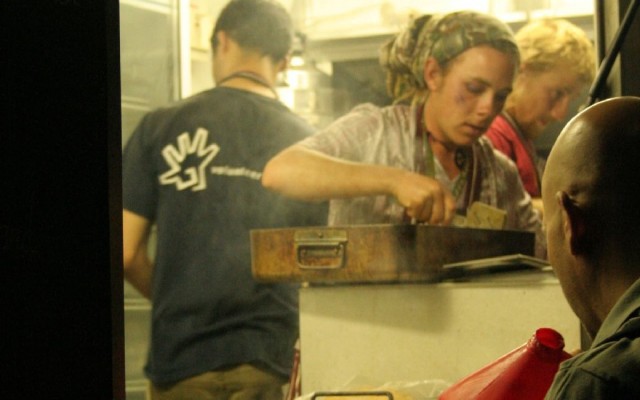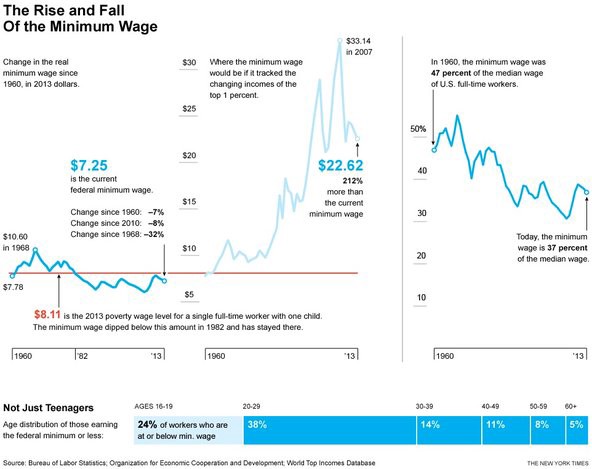A Fair Day’s Pay for a Fair Day’s Work

Arindrajit Dube, an associate professor of economics at the University of Massachusetts, Amherst whose focus includes labor economics, has an editorial about the rise and fall of the minimum wage. He writes that at the heart of the debate about wage standards is the idea of fairness — the Fair Labor Standards Act which established the minimum wage in 1938 was sent to Congress by President Franklin D. Roosevelt, who declared that our country should be able to provide working men and women “a fair day’s pay for a fair day’s work” and that “no business which depends for existence on paying less than living wages to its workers has any right to continue in this country.”
Wages as a percentage of GDP are near an all-time low, and the minimum wage has eroded for a number of reasons, but mostly because we failed to index our wage standard to inflation and the rising cost of living; this could have simply been put into effect by indexing the minimum wage to the consumer price index — a key measure of U.S. inflation. If the minimum wage from 1968 had kept pace with inflation, it would be $10.60 an hour today. On the campaign trail in 2012, Mitt Romney told Anne Thompson from the National Employment Law Project Action Fund:
“My view has been to allow the minimum wage to rise with the [Consumer Price Index] or with another index so that it adjusts automatically over time.”

(See a larger version of this chart.)
We’ve failed to tie the minimum wage to inflation at a federal level, but Ohio, Oregon, Missouri, Vermont and Washington have passed its own legislation to link the minimum wage to the Consumer Price Index, and Florida, San Francisco, Calif., and Santa Fe, N.M. also index based on costs of living formulas.
And American voters aren’t waiting for the federal government to pass legislation to raise the minimum wage. Dube writes:
In 2004, 71 percent of Florida voters opted to raise and inflation-index the minimum wage, which today stands at $7.79 per hour. That same year, 68 percent of Nevadans voted to raise and index their minimum wage, which is now $8.25 for employees without health benefits. Since 1998, 10 states have put minimum wage increases on the ballot; voters have approved them every time.
More cities are debating minimum wage hikes: San Jose recently raised its minimum wage to $10 an hour, the D.C. city council is considering setting its minimum wage at $11.50 an hour by 2016, and over Thanksgiving, the Times reported that voters in SeaTac, Wash. decided to raise its minimum wage to $15 an hour — twice the federal minimum wage — though opposing groups are asking for a recount, and a lawsuit by business groups may prevent the wage hike from going into effect.
Meanwhile Walmart workers and fast food employees are continuing to protest for better wages — a fast food strike in 100 cities is planned for this Thursday. The time to raise the minimum wage is now, and as Dube notes, the increase in wages can be absorbed by passing on some of the costs to consumers:
Existing research suggests that if you raise the minimum wage by 10 percent, you can expect the price of a $3 burger to rise by a few cents, which is enough to absorb a sizable part of the wage increase.
We’re already subsidizing the minimum wage anyway.
Photo: Liz Jones
Support The Billfold
The Billfold continues to exist thanks to support from our readers. Help us continue to do our work by making a monthly pledge on Patreon or a one-time-only contribution through PayPal.
Comments